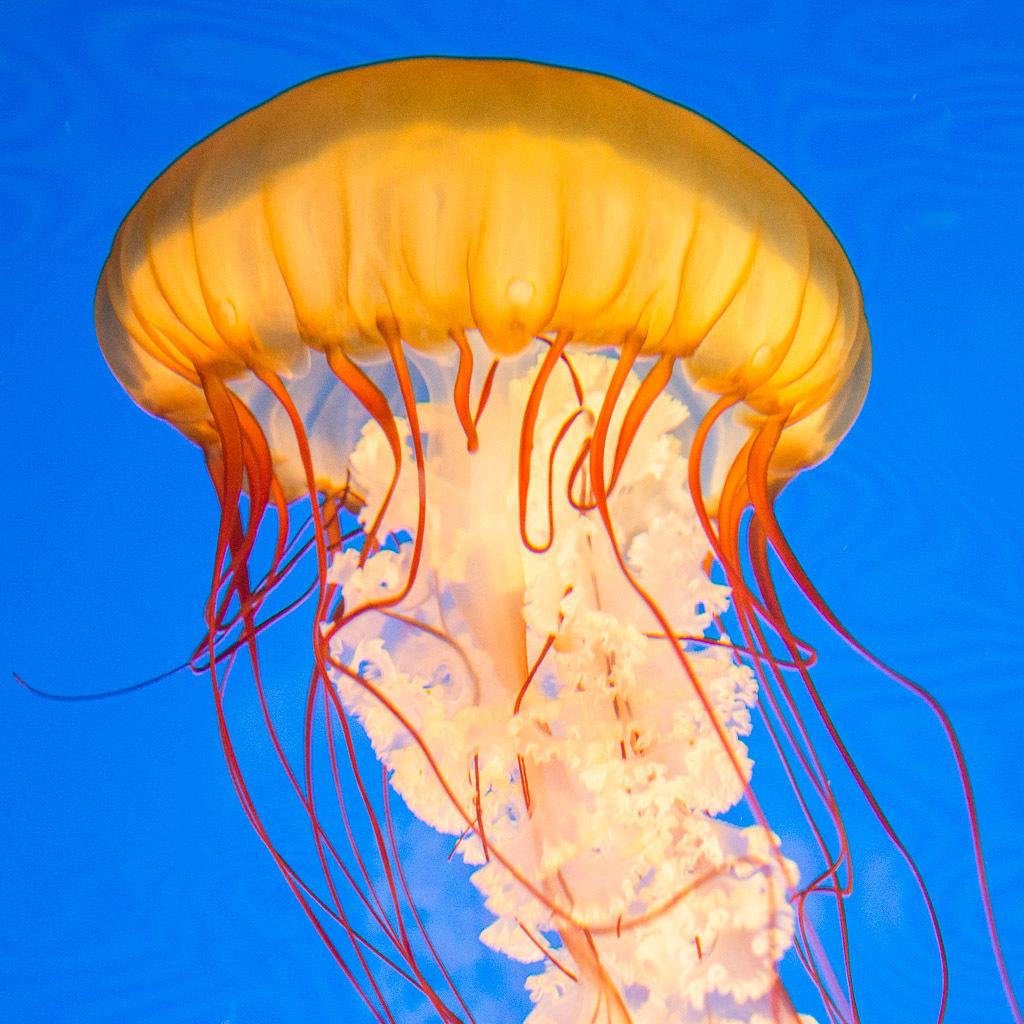Jellyfish
Sea Jellies, often called Jellyfish, are free-swimming marine animals with umbrella-shaped bells and trailing tentacles. Their bodies are 95 percent water and they have no bones, blood, teeth, or fins. A network of nerves on the outer surface of the bell detects light, movement, and sounds.
Jellyfish move by squeezing the transparent muscle fibres that radiate out from the centre of their umbrella-like body, pushing the water behind them as they move.
Many Sea Jellies use their tentacles to trap their prey (small plankton swimming nearby) and guide it towards their stomachs, which are centrally located in the underside of the bell. They may sting their prey to paralyze it. The sting is usually harmless to humans, but a few Sea Jellies have a very powerful sting that can be painful and even dangerous.
Did you know? Sea Jellies range in size from very small to very large. The Lion’s Mane Jelly can be up to 6 ft wide with 115 ft-long tentacles.
See Also: Barnacle, Blue Mussel, Clam, Crab, Harbor Seal, River Otter, Sand Dollar, Sea Anemone, Sea Lion, Sea Otter, Sea Star, Sea Urchin






